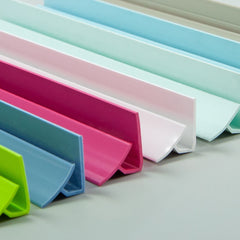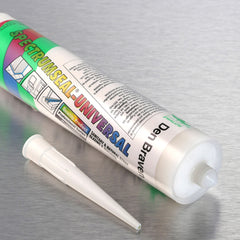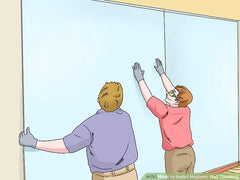In environments where maintaining cleanliness is critical - such as hospitals, laboratories, kitchens, dental offices, schools, and veterinary clinics - hygienic standards are non-negotiable. Hygienic PVC wall cladding is an ideal solution for these requirements, offering a robust, easy-to-maintain and visually appealing finish. This guide delves into the advantages of hygienic PVC wall cladding, its installation, upkeep tips, and specific applications in settings like hospitals, schools, and kitchens.
What is Hygienic PVC Wall Cladding?
Hygienic PVC (Polyvinyl Chloride) wall cladding consists of durable plastic panels designed for wall protection. Frequently used in spaces where sanitation is essential, this cladding provides a smooth, non-porous surface that inhibits the growth of bacteria and mould.

Benefits of Hygienic PVC Wall Cladding
Durability and Strength
PVC wall panels are highly resistant to impact, scratches and chemicals, making them perfect for high-traffic areas where walls endure frequent cleaning or potential damage.
Ease of Cleaning
The non-porous, smooth surface of hygienic cladding makes it easy to remove dirt, grime and bacteria. This feature significantly reduces the cleaning time and effort compared to traditional wall finishes.
Moisture Resistance
PVC is naturally resistant to water, making it an excellent choice for moisture-prone areas like bathrooms, kitchens and food processing facilities. It helps prevent mould and mildew, maintaining a hygienic environment.
Cost-Effective
PVC cladding is an affordable wall covering option. Its long-lasting durability and minimal maintenance needs translate to long-term savings on repair and cleaning costs.
Aesthetic Versatility
Available in a wide range of colours and finishes, hygienic wall cladding can be customised to suit the design requirements of any space, ensuring a professional appearance while upholding hygiene standards.
Seamless Surface
When installed with the appropriate trims, which enhance visual appeal and hygiene, PVC cladding creates a seamless surface. The absence of gaps or joints where dirt and bacteria can accumulate ensures easy cleaning and effective sterilisation, resulting in a clean, professional finish.
The Importance of Hygienic PVC Wall Cladding in Hospitals
In hospitals and healthcare settings, maintaining the highest hygiene standards is crucial to prevent the spread of infections and safeguard patient health. Hygienic cladding plays a key role in achieving these standards with its germ-resistant and chemical-resistant surface, minimising the risk of hospital-acquired infections (HAIs).

This type of cladding provides seamless, liquid-proof surfaces that prevent pathogens from accumulating in cracks and crevices. Its durability against frequent disinfectant use ensures hospital walls remain contaminant-free, protecting patients and supporting healthcare workers in maintaining a sterile environment.
Why Kitchens and Cafeterias Opt for Hygienic PVC Wall Cladding
In commercial kitchens and cafeterias, maintaining high standards of cleanliness is essential for food safety. Hygienic wall cladding is critical for food safety compliance, providing robust protection against food splatters, grease and humidity. The cladding’s stain resistance and barrier against contaminants make it an ideal choice for these demanding environments.

Its easy-to-clean surface allows kitchen staff to quickly sanitise the area, reducing the risk of food-borne illnesses. Additionally, installing hygienic wall cladding helps meet health and safety standards, facilitating regular inspections and preventing costly fines or closures due to hygiene violations.
Improving School Environments with Hygienic PVC Wall Cladding
Hygienic wall cladding is essential in schools, particularly in areas like gyms and art classrooms where walls face unique challenges. In school gyms, the cladding provides a durable surface that withstands sports-related impacts while being easy to clean, reducing the spread of germs among students.
In art classrooms, where walls are often exposed to paint, clay and other materials, hygienic cladding ensures these substances can be easily wiped away, maintaining a clean and safe learning facility. PVC cladding not only supports high cleanliness standards but also ensures compliance with health and safety regulations, creating a healthier school environment.

How to Install PVC Cladding
Installing PVC wall cladding is straightforward. Start by cleaning and preparing the wall, then measure and cut the panels to size. Apply a suitable adhesive, press the panels firmly onto the wall, and smooth out air bubbles. Seal joints and edges with silicone to prevent moisture ingress, and ensure the adhesive cures properly. For a comprehensive installation guide, check the datasheet available on each product page.
How to Clean Hygienic Wall Cladding
To keep your hygienic PVC wall cladding in top condition, regularly clean the panels with a mild detergent and a soft cloth. Avoid abrasive cleaners that can scratch the surface. Protect against discolouration by limiting exposure to harsh chemicals and promptly address any damage. Periodically inspect the cladding, especially in high-moisture areas, to ensure seals and joints are intact. Reseal if necessary. For detailed cleaning instructions, refer to the datasheet on each product page.
Why Choose Simply Cladding for Your Hygienic Wall Cladding Needs?
Selecting Simply Cladding for your PVC cladding requirements means partnering with a knowledgeable team with over 30 years of experience in the plastic industry. Alongside our range of PVC wall cladding, our sister brand, Simply Plastics, offers an extensive selection of plastic materials, including Perspex®, Dibond, Foamex, Polycarbonate, PVC and acrylic mirror, ensuring you have access to high-quality materials for all your plastic needs.


